Understanding Deck Archetypes in Hearthstone
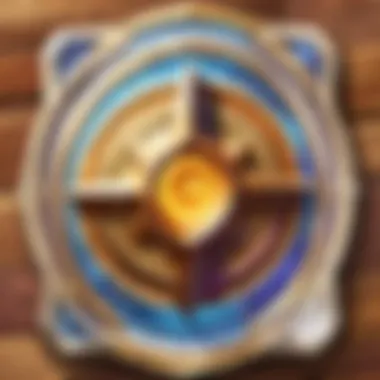
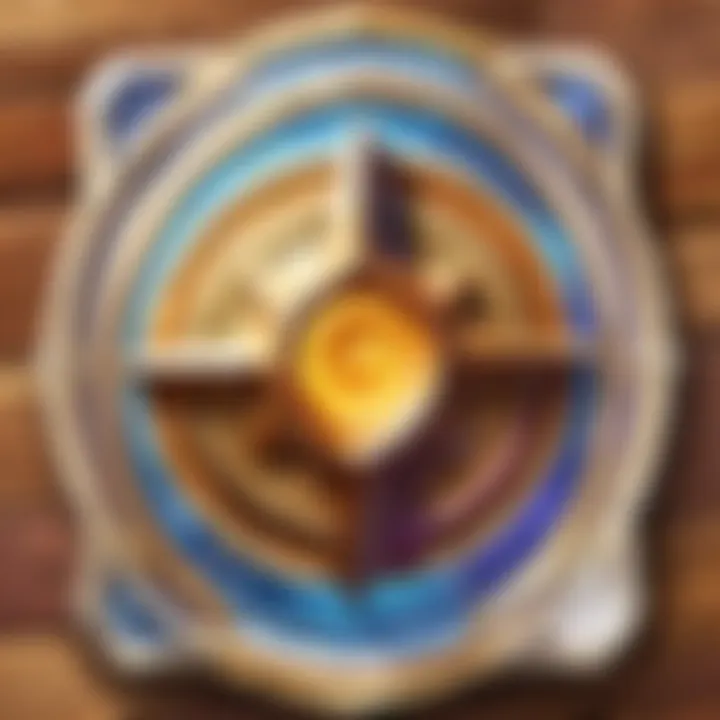
Intro
In the ever-evolving landscape of Hearthstone, understanding deck archetypes becomes paramount for anyone looking to maximize their gameplay potential. Deck archetypes are not just a collection of cards; they encapsulate strategies, synergies, and game plans that can significantly impact matches.
Each archetype has its own personality, strengths, and weaknesses—think of them as the different styles of a painter. Some players prefer the aggressive strokes of a Face Hunter, while others may revel in the calculated brushwork of Control decks. Whichever style resonates with you, grasping the nuances of these archetypes can inform your decisions and orient your strategies more effectively, whether you’re playing casually or wrestling with opponents in ranked matches.
As the meta shifts with each new expansion and patch, players must adapt to those changes to maintain their edge. New cards can tip the scales, creating fresh opportunities or posing new dangers.
Understanding deck archetypes brings players closer to mastering not just their favored decks, but also to reading and countering the strategies employed by opponents. Let’s delve deeper into this dynamic interplay of deck strategies and game mechanics.
Defining Deck Archetypes
When it comes to Hearthstone, understanding deck archetypes isn’t just an academic exercise; it’s a cornerstone of strategic gameplay. Deck archetypes serve as frameworks that guide players in constructing their decks with specific goals and strategies in mind. Recognizing these archetypes is pivotal because they can significantly influence a player’s approach to the game, their card choices, and ultimately, their success on the battlefield.
The Concept of Archetypes
At its essence, an archetype is a model or a typical example of something. In Hearthstone, deck archetypes capture the essence of various strategies and play styles. They encapsulate a set of cards that work well together to achieve a specific objective, whether it’s overwhelming the opponent quickly or controlling the game until victory.
For instance, an Aggro deck strives to finish the game as quickly as possible, often referred to as ‘getting in and getting out’ before the opponent has a chance to react. This contrasts sharply with Control decks, which may methodically counter each threat while managing resources carefully to dominate the latter stages of the game.
Understanding these archetypes allows players to predict how their opponents might play and adjust their tactics accordingly. It’s like knowing the playbook of a fellow team; if you understand their plans, countering becomes much easier.
Importance in Gameplay
The significance of deck archetypes extends beyond theoretical discussions. They are critical in shaping gameplay dynamics. Here’s a closer look at why this matters:
- Strategy Development: Knowing the archetype you’re facing helps fine-tune your gameplay strategy. For instance, if you're up against an Aggro deck, you may want to prioritize removal spells and defensive strategies early.
- Siding Options: With a grasp on archetypes, you can make smarter decisions about side-decking cards, choosing those that can disrupt your opponent's game plan.
- Meta Awareness: Deck archetypes also inform players about meta shifts. If Aggro decks are dominating the scene, players might adapt their strategies to include more resilient cards to withstand the offensive onslaught.
"Understanding the nature of each archetype can elevate your gameplay—giving you an edge over players who tread the more casual path."
In sum, defining deck archetypes is not only about categorizing decks but also about enriching gameplay. It offers players the ability to analyze their own strategies, predict outcomes, and ultimately gain the upper hand in various scenarios. A thorough appreciation of deck archetypes turns mere deck-building into an art form rooted in strategy and foresight.
Types of Deck Archetypes
Understanding the various types of deck archetypes is fundamental for anyone wanting to compete or enjoy Hearthstone at a deeper level. Each archetype brings a unique flavor and strategy to the game, shaping not only how players build their decks but also how they approach each match. This section dissects several popular archetypes, including Aggro, Control, Combo, and Midrange decks, shedding light on their distinct characteristics, advantages, and nuances.
Aggro Decks
Aggro decks focus on dealing as much damage to the opponent as quickly as possible, often overwhelming them before they can establish any defenses. This archetype is renowned for its fast-paced playstyle, where the objective is to outpace your opponent in a race to the finish.
Core Characteristics
The core characteristic of Aggro decks lies in their speed and efficiency. These decks typically contain a higher ratio of low-cost minions and direct damage spells, allowing players to flood the board quickly. One significant aspect of the core characteristic is that they thrive on pressure, forcing opponents to react rather than execute their plans. This is why aggro decks have become a popular choice in various metas. They capitalize on opponents’ slower responses, striking before they can stabilize. However, the downside is their potential to falter if not effective early, often lacking recovery strategies if the initial push fails.
Popular Examples
When discussing popular examples of aggro decks, names like Pirate Warrior and Zoo Warlock immediately come to mind. These decks excel in creating aggressive board states that put the opponent on the back foot from the get-go. The unique feature here is the sheer volume of aggressive options available. This can be both beneficial and disadvantageous; while it allows for a quick pivot or change in tactics, it can also backfire if players don’t adapt as the meta shifts. As a result, players need to stay sharp and watch the current trends.
Optimal Strategies
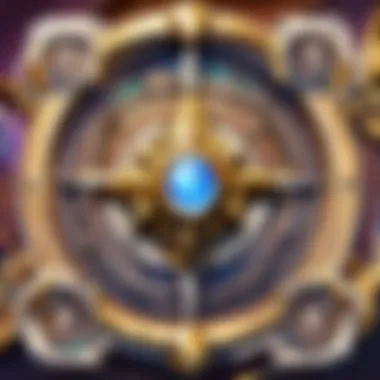
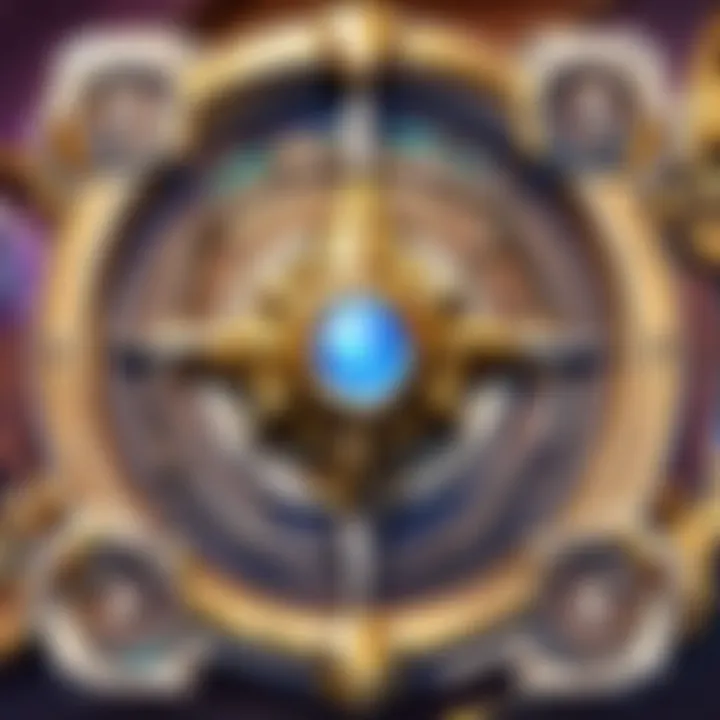
Optimal strategies for aggro decks revolve around maintaining relentless pressure. This includes knowing when to trade versus when to face damage. A primary tenet is to always push for damage unless trading leads to a more advantageous board state. Furthermore, understanding resource management, such as determining when to drop your last minion or spell, is crucial. Yet, striking the right balance is the challenge; overextending can leave a player vulnerable to board clears.
Control Decks
Control decks serve a different purpose: they are designed to survive the early game and wear down their opponents until they can take control of the game. This method relies more on strategy and defensive tactics rather than raw aggression.
Defining Features
The defining feature of control decks is their ability to exert dominance in the later stages of a game. Control players typically prioritize card advantage over immediate damage. This strategy often involves using board clears and counter-play techniques to survive aggressive onslaughts. Control decks, like Control Priest, often showcase powerful late-game options that can swing the game dramatically in their favor. However, they can struggle against hyper-aggressive decks if they do not establish their defenses early enough.
Key Cards
Key cards in control decks often include powerful board wipes and healing spells. Cards like Flamestrike or Holy Nova are vital for regaining board control. The unique aspect is how these cards synergize to provide a formidable defensive wall and allow for strategic counterplays. Still, the downside lies in the heavy mana cost of many control tools, which makes timing essential to avoid being overrun early.
Win Conditions
The win conditions for control decks generally revolve around outlasting the opponent and generating severe late-game threats. For instance, Alexstrasza can be a catastrophic finisher, swinging the game's outcome when the opponent is least prepared. This idea of waiting for the right moment can be rewarding, but patience is not always the easiest approach, particularly against consistent aggro pressures.
Combo Decks
Combo decks hinge on creating powerful combinations of cards that can lead to almost instant victories. These decks tend to require a more intricate understanding of the game mechanics, focusing heavily on timing and synergy.
Mechanics Overview
The mechanics of combo decks typically involve drawing specific cards and executing them in a particular sequence to achieve maximum impact. They rely on building up to a surprise finish, which can catch opponents off-guard. This type of strategy is often seen as engaging and rewarding. Their unique feature is they demand extensive knowledge of both your own and your opponent’s deck, making decision-making pivotal. However, this can also lead to moments of frustration if the pieces don’t align as intended.
Synergy Explanation
Synergies are core to the success of combo decks. The cards must fit together like pieces of a puzzle, engineered to create powerful results. For example, a Malygos combo deck can generate absurd amounts of damage with the right spell cards in hand. Yet, this strategic approach can be double-edged; if the synergies fail or are disrupted, the deck can fall apart, thereby requiring keen awareness of the opponent's strategies.
Case Studies
Parsing through notable case studies of combo decks can provide real insights into their strengths and weaknesses. For instance, the famous Menagerie Druid showcased how various synergies could lead to explosive turns. However, if the opponent responded with disruption strategies, the deck can stall and lose its effectiveness. This highlights the dependence on maintaining pressure and achieving a balance between offense and defense in their execution.
Midrange Decks
Midrange decks blend characteristics from both aggro and control archetypes. They are adaptable, providing flexibility while also being able to apply pressure on opponents.
Strategic Flexibility
Strategic flexibility is the hallmark of midrange decks. This enables players to shift between aggressive plays and defensive maneuvers based on the evolving state of the match. A favored characteristic of midrange decks is that they can often respond effectively to different board situations, adjusting their strategies as required. The downside is that lack of specialization may make midrange decks less effective against finely-tuned strategies specifically designed to excel against either aggro or control.
Winning Approaches
Winning approaches for midrange decks typically involve maintaining board presence while hitting the right curve. This concept revolves around taking advantage of plays that contest the board while gradually progressing toward a win condition. Furthermore, the nuanced balancing act of pressure versus defense can offer critical paths to victory. Here, players may also find themselves adapting their card choices based on what they face.
Balancing Act
The balancing act is essential for midrange decks. Effective players must learn to dance between aggression and control, knowing when to hold back and when to push forward. This characteristic of midrange decks allows for responsive gameplay that is often suitable against entering various trends in the meta. However, misjudgment in balance may find them at odds in matchups against hyper-aggressive or control-heavy opponents, underscoring the need for continuous learning and adaptation.
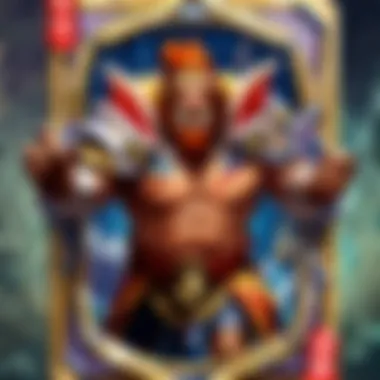
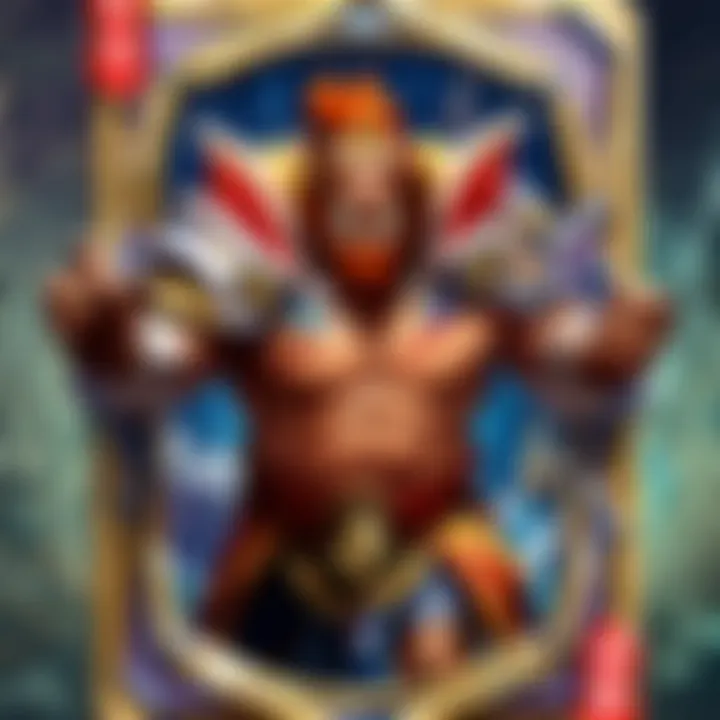
“In Hearthstone, knowing your deck is half the battle; the other half is knowing your enemy and adapting to every twist and turn.”
Understanding the significance of deck archetypes enhances your gameplay experience and equips you with the tools needed to adapt to any situation that arises. By diving into the depths of aggro, control, combo, and midrange decks, you better prepare yourself for the challenges of Hearthstone and improve your overall strategic approach.
Evolution of Deck Archetypes
Understanding the evolution of deck archetypes in Hearthstone is like peeling an onion, layer by layer. The game has been around for several years, and throughout that time, the strategies, styles, and player preferences have morphed with each patch and expansion. It's crucial to explore how these changes affect gameplay and deck-building, making it possible for players to stay ahead in the competitive arena.
Historical Context
Initial Deck Archetypes
When Hearthstone first rolled out to players, the deck archetypes were simpler and each served a clear function. The initial choices were primarily Aggro, Control, and Combo. These preliminary archetypes laid the groundwork for more strategic gameplay. Aggro decks, for example, aimed for a quick victory often overwhelming opponents with speedy minions and spells. This approach proved to be popular as it allowed players to assert dominance quickly. At the same time, Control decks thrived by stalling the game and manipulating the board until they could make a decisive move. What makes these early archetypes still relevant today is their straightforward nature, which is beneficial for newcomers. Yet, one inherent weakness they share is the potential predictability of strategy, making them susceptible to counter-decks.
Meta Evolution
Next comes the crucial aspect of meta evolution, which shapes how archetypes develop over time. As players grew more skilled and aware of the game's mechanics, the meta began to reflect a constant shifting of popular deck types. This evolution can be quite significant; one patch can send previously unbeatable decks to the back of the bus. A key characteristic of meta evolution is its cyclical nature; as one deck rises to prominence, players develop counters, thus creating an environment where adaptability is key. This shifting dynamic makes staying relevant in the game an uphill battle for many and emphasizes the importance of being aware of emerging trends and counter-strategies. Players must be nimble, adjusting their tactics or even completely overhauling their deck to keep pace.
Role of Expansions
Expansions play a pivotal role in the evolution of deck archetypes by introducing new cards, mechanics, and synergies that can redefine strategies entirely. With each expansion, the potential for innovation grows immensely. For instance, cards that introduce unique abilities can complement underwhelming archetypes or revitalize those languishing in obscurity. The key feature of expansions is not just their addition of cards but how they can reshape existing archetypes or even spawn entirely new ones. This process can be double-edged, as certain expansions can create massively overpowered cards that skew the game balance, often annoying players who favor slower-paced strategies. However, the excitement of discovering new synergies and potential combinations keeps the gameplay fresh and engaging.
Current Meta Trends
The current trends within the meta reflect not just personal preferences but broader community interactions and developments within the game. Understanding this landscape is vital for any player.
Shifts in Popularity
Popular decks undergo constant metamorphosis based on numerous factors, including updates and community interactions. A notable aspect of these shifts is how particular archetypes can emerge as favorable due to effective counterplay from others. For example, when a particular deck dominates, it’s common to see a sudden rise in decks designed specifically to counter that dominant strategy. Recognizing these shifts is important for players who aim to optimize their chances of victory. It allows them to adapt swiftly to the mercurial landscape of Hearthstone.
Impact of New Cards
The introduction of new cards is often a game-changer. New abilities can create unforeseen synergies, resulting in fresh archetypes. Cards may disrupt existing ones or elevate niche decks into the spotlight. For instance, a single card with an outstanding effect may elevate an otherwise mediocre archetype into a force to be reckoned with.
Community Influences
Lastly, the influence of the community cannot be understated. Player discussions on platforms like reddit.com or facebook.com bring insights into evolving strategies. Streamers and content creators often shine a light on new discoveries in deck-building, allowing widespread dissemination of innovative ideas. The community's role in shaping the archetype landscape is an intricate dance of creativity infused with feedback. Recognizing how audiences engage in shared information not only fosters a sense of camaraderie but creates a vibrant ecosystem ripe with innovation.
"In the heart of every player lies the urge to innovate, adapt, and master the unpredictable dance of deck archetypes."
Thus, the evolution of deck archetypes is a tale of continual transformation fueled by historical context, the rhythmic cadence of meta shifts, and the relentless surge of community engagement. The importance of each aspect lies in how they come together to create rich gameplay experiences, shaping the strategies that define Hearthstone today.
Deck-Building Strategies
Deck-building strategies in Hearthstone are the backbone of successful play. They encompass not just the choice of cards, but also how players envision their approach to the game. Important in both casual and competitive settings, these strategies allow players to tailor their decks to their individual styles, the current meta, and the strengths and weaknesses of their chosen archetype. Understanding how to craft a deck strategically can provide a significant edge in gameplay.
Identifying Your Playstyle
In the realm of Hearthstone, identifying your playstyle sets the stage for building an effective deck. Everyone has their own approach - some prefer to strike fast and keep pressure on their opponents, while others may like to play a long and strategic game, carefully plotting their moves. Reflecting on past experiences can offer clues about what suits you best. Think about whether you enjoy taking risks or prefer a more calculated method. This self-awareness lays the groundwork for your deck construction.
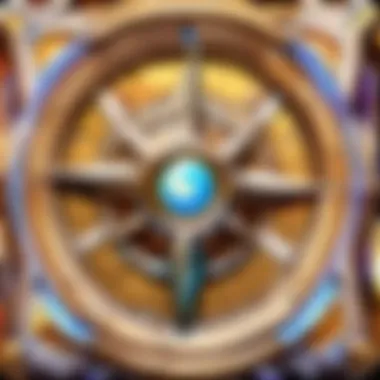
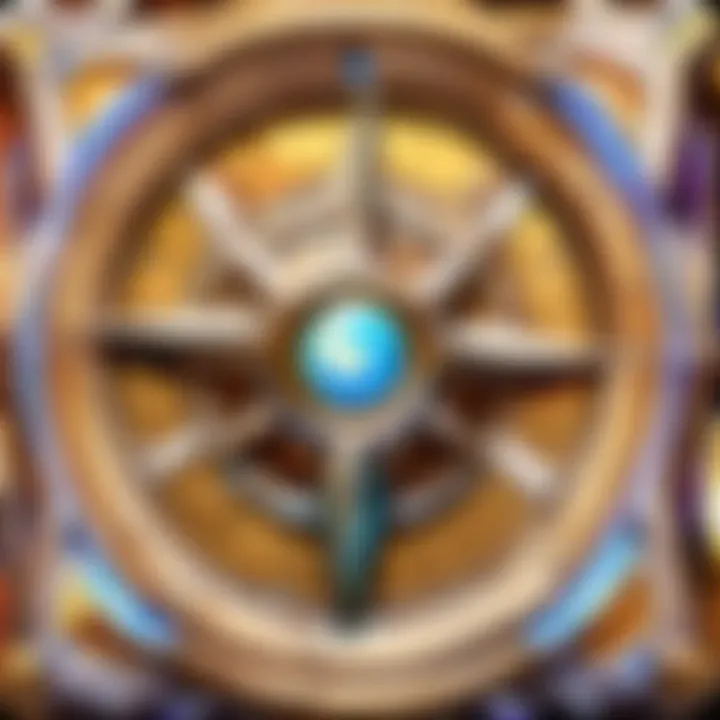
Card Selection Process
Understanding Synergies
When selecting cards, understanding synergies is pivotal. Synergy refers to the way cards can work together to produce greater results than playing them individually. For instance, if you build a deck around Taunt minions, cards that give bonuses when they are played alongside others can create powerful board presence. This aspect often becomes a hallmark of successful decks. However, ensuring that synergies are woven throughout the entire structure is crucial; a deck lacking cohesion is like a ship with holes – bound to sink.
Meta Considerations
Meta considerations involve staying attuned to the shifting tides of the game environment. The "meta" refers to the current trends in gameplay—what decks are popular and effective at a given time. Recognizing which archetypes dominate can help you avoid common pitfalls and prepare counter-strategies. Ignoring meta shifts can leave you out in the cold, vulnerable to decks designed specifically to exploit your weaknesses. Keep an eye on community discussions and updates to consistently adapt your card choices.
Resource Management
Resource management plays a vital role in maintaining the balance and effectiveness of your deck. In Hearthstone, resources include health, mana, and card advantage. Properly managing these can dictate the outcome of any match. For example, efficiently spending mana on powerful cards at the right time can seize tempo, shifting the game's momentum in your favor. To the contrary, overextending can leave you with empty hands and open opportunities for the opponent. Developing a keen sense for resource management is often what separates good players from great ones.
Testing and Iteration
Having a solid deck is just the beginning. Testing and iteration ensure that your strategy holds up against various opponents. This usually means taking your deck into matches, observing how it performs, and making adjustments as necessary.
Importance of Playtesting
Playtesting is essential for recognizing the strengths and weaknesses of your deck in real-world scenarios. It allows you to witness how different matchups unfold, which can inform revisions. Continually tinkering with your deck based on playtesting results can significantly improve your chances of success. Many players tend to overlook this, believing that a well-crafted deck will automatically perform. However, understanding how it interacts with a diverse array of decks is what solidifies its effectiveness.
Adjusting Strategy
Adapting your strategy is deeply intertwined with the ebb and flow of gameplay. Sometimes, you might find that a deck works brilliantly for a week, only for it to fail miserably in the following one. The ability to pivot, whether through minor card swaps or entirely new constructs, creates a path to resilience. Players who can adjust strategy are better equipped to navigate the unpredictable waters of competitive Hearthstone.
Analyzing Results
Analyzing results is crucial for refining your approach. This includes looking at win rates, how often certain cards perform under different conditions, and overall game flow. Solid data can inform what aspects of your strategy need fine-tuning. Perhaps a card consistently underperforms, or maybe a certain matchup feels imbalanced. Such insights can lead to substantive improvements and a more robust deck.
"In the ever-evolving game of Hearthstone, flexibility in deck-building is often your strongest ally."
By honing your deck-building strategies, whether through identifying playstyles, recognizing synergies, or analyzing results through repeated playtesting, you build a more adaptable and potent deck capable of withstanding the many challenges that arise in gameplay.
Ending
In wrapping up our exploration of deck archetypes in Hearthstone, it’s crucial to grasp how these concepts tie everything together. Understanding these archetypes lays the groundwork for smarter gameplay and sharper deck-building strategies.
Recap of Key Insights
Throughout this article, we've navigated through various deck archetypes, dissecting their core traits, gameplay strategies, and importance in the evolving meta. Players can significantly benefit from recognizing how different styles—be it Aggro, Control, Combo, or Midrange—shape the dynamics of every match. Like a seasoned sailor reading the winds, a player who comprehends these deck structures can adjust their tactics accordingly, enhancing their chances of victory.
Looking Forward
Future of Deck Archetypes
Looking ahead, the future of deck archetypes seems promising. As new expansions are released, the inherent nature of these archetypes will evolve. More than just a reflection of current trends, future archetypes will likely incorporate fresh mechanics and interactions that current players are yet to imagine. This makes adaptability a vital trait for anyone looking to stay on top of the game. Because of this focus on innovation, players who can embrace change and develop unique strategies will find themselves at a distinct advantage in competitive settings.
Potential Innovations
When discussing potential innovations, the integration of advanced game mechanics often comes to mind. These innovations can bridge the gap between differing archetypes, resulting in hybrid styles that could dominate future metas. One key characteristic of these innovations lies in their flexibility—allowing players to incorporate varied strategies within a single deck. Of course, the challenge remains: how does one balance this innovation with maintaining a focused strategy? This area remains ripe for exploration, and players willing to experiment could uncover significant wins.
Community-driven Trends
Community-driven trends have a formidable influence on how decks are shaped in Hearthstone. As players share strategies and insights across platforms like Reddit and Facebook, a culture of collaboration emerges that inevitably leads to the birth of new archetypes. The key characteristic here is the rapid dissemination of information, which fosters an environment where innovative ideas thrive. However, this can bring both advantages and disadvantages. While trends may push players into currently popular archetypes, they can also overshadow unique strategies that might otherwise succeed. Players must navigate this landscape thoughtfully, keeping an eye on both the crowd and their personal playstyle.







